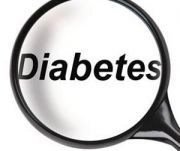Article
Combination Treatment with SGLT2 Inhibitor Dapagliflozin Is Effective in Patients with Type 2 Diabetes
Author(s):
Patients with type 2 diabetes and inadequate glycemic control treated with dapagliflozin plus metformin and sulfonylurea experienced sustained improvements in HbA1c, fasting plasma glucose, weight loss, and systolic blood pressure over 52 weeks.

Stephan Matthaei, MD, director of the Diabetes, Metabolism, and Endocrinology Center at Quakenbrück Hospital in Germany, delivered a talk Monday at the American Diabetes Association’s 74th Scientific Sessions on a study that evaluated the use of the SGLT2 inhibitor dapagliflozin as add-on therapy to metformin plus sulfonylurea in treating type 2 diabetes.
While describing the motivation for conducting the study, Matthaei noted that dapagliflozin is “a highly-selective inhibitor of sodium-glucose co-transporter 2 and is approved for the treatment of type 2 diabetes in the United States and Europe. The drug is effective and well tolerated, improving glycemic control and promoting bodyweight loss in patients with type 2 diabetes.”
The use of SGLT2 inhibitors as part of combination therapy has become common practice as more data comes in. “Sulfonylureas are extensively used as monotherapy or in combination with metformin. Dapagliflozin can be used as monotherapy, as an add-on to another anti-hyperglycemic medication, or as part of a triple combination therapy. The American Diabetes Association, European Association for the Study of Diabetes, and American Association of Clinical Endocrinologists each recommend the use of triple therapy should a dual therapy approach fail,” said Matthaei.
For the current study, patients with type 2 diabetes receiving a maximum tolerated dose of sulfonylurea and metformin were randomized to dapagliflozin 10 mg/day or placebo for 52 weeks, with an initial 24-week randomized, double-blind period followed by a 28-week extension.
At week 52, analysis of data showed that HbA1c and fasting plasma glucose improved with dapagliflozin compared with placebo. A higher proportion of patients on dapagliflozin (27.3%) achieved the glycemic goal (HbA1c <7.0%) compared with placebo (11.3%). Bodyweight and systolic blood pressure were both reduced with dapagliflozin compared with placebo.
Total cholesterol, LDL cholesterol, and HDL cholesterol all increased from baseline to week 52 with dapagliflozin compared with placebo. Triglycerides decreased from baseline with dapagliflozin compared with placebo. No patients discontinued due to lack of glycemic control; 10.1% of patients with dapagliflozin were rescued for failing to reach glycemic targets compared with 42.7% of the placebo patients.
The frequency of adverse events (AEs) in the dapagliflozin group was 69.7% compared with 73.4% in the placebo group. Serious adverse events (SAEs) occurred in 6.4% of patients on dapagliflozin compared with 7.3% of patients on placebo. Hypoglycemic events occurred in 15.6% of patients in the dapagliflozin group compared with 8.3% of patients in the placebo group. Genital infections were reported by 10.1% of dapagliflozin patients (14.3% of women versus 2.0% of men) compared with 0.9% of patients on placebo (4.3% of women versus 0% of men). Urinary tract infections were reported by 10.1%of dapagliflozin patients (12.7% of women versus 6.5% of men) compared with 11.0% of patients on placebo (22.4% of women versus 1.7% of men).
Matthaei said these results showed that dapagliflozin was associated with “sustained glycemic improvement over 52 weeks in patients who had inadequate glycemic control on metformin plus a sulfonylurea. Weight loss with dapagliflozin was also maintained over this period. Dapagliflozin significantly reduced systolic blood pressure from baseline at 24 weeks. Although by 52 weeks, systolic blood pressure had returned to baseline levels, the levels remained below those of the placebo group. Adverse events observed were consistent with the overall dapagliflozin clinical development program. In conclusion, dapagliflozin in triple therapy as an add-on to metformin plus sulfonylurea was well tolerated and efficacious over 52 weeks.”



